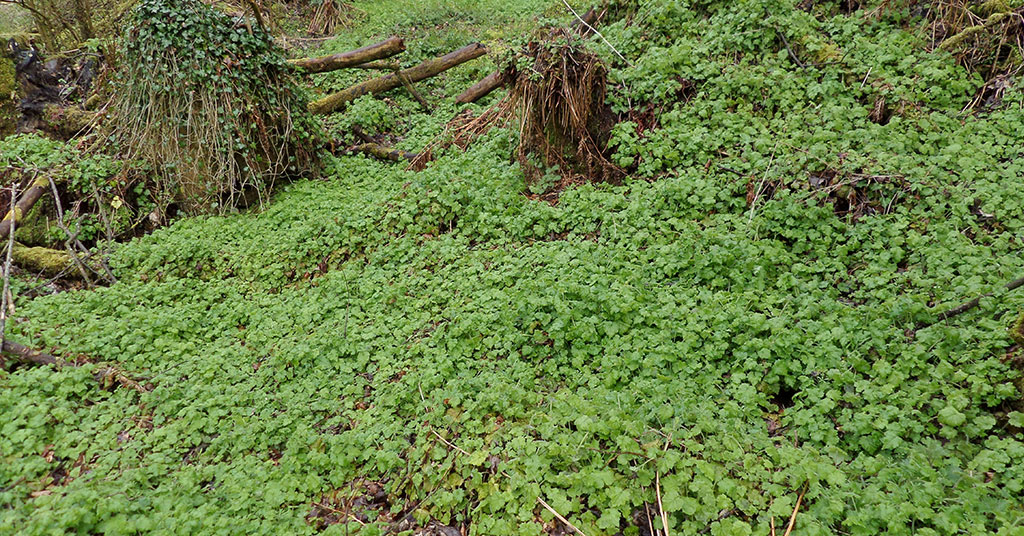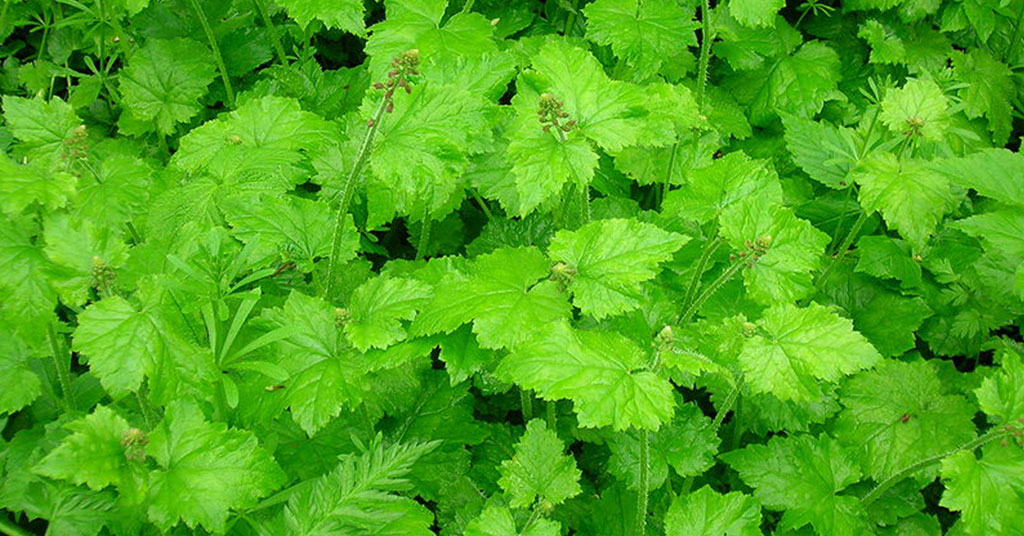The piggyback plant is a great addition to your garden, both as a houseplant and as a native, shade-loving perennial groundcover when planted in the Pacific Northwest. In its native range, it stays green year-round and grows best in the western, rainier parts of California, Oregon, Washington, and British Columbia.
What is a piggyback plant?
The piggyback plant is a perennial flower native to the Pacific Northwest of the United States and Canada that gets its name from the unusual way its foliage grows: new leaves sprout directly from the center of large, older leaves.
- Scientific name: Tolmiea menziesii
- Other names: Youth-on-age plant, pickaback plant
- Native to: California north to British Columbia
- Invasiveness: Yes
- Tenderness: Perennial
- Sun: Partial shade
- Water: Always moist
- Soil: Moist, well-drained
- Hardiness zone: 7-9
- When to plant: Spring
- Spacing: 20 inches
- Plant height: 16-32 inches
- Bloom period: Spring and summer
- Flower color: Purple and green
- Container friendly: Yes
- Fertilizer: 10-10-10
- Toxicity: No
- Drought tolerant: No
- Deer resistant: No
- Pest resistant: Yes
How to grow a piggyback plant
Piggback plants (Tolmiea menziesii) are a perennial groundcover type plant native to the Pacific Northwest that is commonly grown as a houseplant. It grows in shady, damp, wooded areas from California north to British Columbia, hardiness zones 7-9. It is a shade-loving perennial plant that prefers constantly moist but well-draining soil.
When planted outdoors, it can grow up to 32 inches tall and has a spread of 20 inches. If you intend to plant multiple Tolmiea menziesii, space them out at least that much. The piggyback plant send up brown, purple, and green flowers in spring and summer.
The piggyback plant is a prized but uncommon houseplant. It handles being grown in containers well and prefers a balanced 10-10-10 fertilizer provided monthly during its summer growing season. It is not known to be toxic to pets, is not deer-resistant or drought tolerant, but is considered hardy and pest resistant.
Invasiveness

Tolmiea menziesii is not registered as an invasive plant anywhere yet, but some gardeners have reported that it can spread out of control in non-native regions that mimic its natural growing conditions, so if you live in a rainy, warm area outside of the Pacific Northwest, plant with extreme caution. When in doubt, just keep it in a container.
Growing piggyback plants in containers
Piggyback plants do great when grown in containers. They prefer neutral to acidic, well-draining soil that is kept constantly moist but not drenched. You should never let your potted piggyback plant get totally dry. When planted in the ground, fertilizer isn’t required, but potted Tolmiea menziesii do well with a monthly serving of a balanced 10-10-10 fertilizer during the summer months when it’s putting on the most foliage.
This plant does well in a hanging basket. Its branches will droop and hang down as they grow and top out at around 2 feet long. If your plant has outgrown its pot, you can repot it into a larger container in spring.
Propagating piggyback plants
Propagating a piggyback plant is simple, especially during the summer growing months. As new growth begins to develop at the base of older leafs, you can detach the older leaf and press it into the soil surrounding the plant or grow in a new container. Keep the soil nice and most, don’t let it dry out. New roots will begin to develop and you will have propagated a brand new piggyback plant!
When to plant piggyback plants
Piggyback plant starts can be planted in containers as houseplants any time of year, but the best time to propagate them is in the summer as new growth emerges from older leaves. The same is true of plants being grown outdoors. If you’re trying to get your piggyback plant to dominate a portion of your landscape, taking cuttings and pressing them into the soil any time in the summer will work. By the time early fall arrives, your piggyback plant starts will be less likely to get established and survive the winter.
Harvesting piggyback plant seeds
Toward the end of summer, your piggyback plant flowers will begin to whither and die off. What’s left behind are small, slender capsules, approximately 10 mm long. Carefully snip these capsules from the flower stems and allow them to dry. Once fully dried, you can split open the capsule and find small, brown seeds inside. Store these seeds until you’re ready to plant them.













